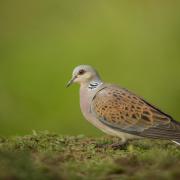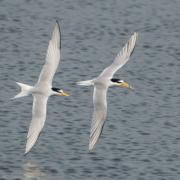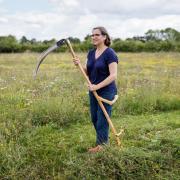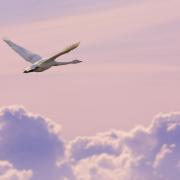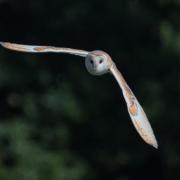Photographer and nature lover Ryan Dorling explains where in Suffolk to see kingfishers and how to photograph them

The kingfisher is one of Britain’s most beautiful and popular birds, and Suffolk is a superb place to watch these stunning creatures. Kingfishers are commonly seen around rivers, streams, lakes and ponds. The most you might see is a fleeting blue flash in front of you as this supreme fisherman makes his way down rivers, skimming the top of the water.
Kingfishers hunt small fish, such as minnows and sticklebacks, but they have also been known to take aquatic insects. Food can be scarce, so the birds are very territorial, defending a territory typically covering around 1km of river but sometimes as much as 3km to 5km. They aggressively fight off any intruding kingfishers who stray onto their patch.
Kingfishers hunt by sitting silently on a low hanging branch concentrating on the water below. It’s also common for them to hover over the water, but this uses up vital energy and makes it much harder for the bird to positively lock onto a fish beneath the water.
When a kingfisher lands on a branch moving up and down in the wind, its head stays still, even when the bird’s body is moving with the motion of the branch. It’s much the same way a kestrel hovers in search of prey.

Once the kingfisher has selected its target below, it leaves the perch and dives headfirst into the water, grabbing the fish or insect in its beak and bursting out of the water – all in a blink of an eye. Often a bird returns to the same perch with its prize to feed. To devour its prey, the kingfisher holds the fish in its beak by the tail and then strikes the head of the fish on the branch repeatedly to stun it.
In the case of sticklebacks this makes their sharp protective spines relax, allowing the kingfisher to swallow it head first. Once the fish has been digested, the kingfisher produces a pellet, similar to those of an owl, containing fish scales and bones.
Where & when to see kingfishers
Kingfishers can be seen all year round, but I spent a couple of mornings in September at the Suffolk Wildlife Trust’s Lackford Lakes Reserve when the birds were showing really well. Of course, this doesn’t mean you’re guaranteed to see one every time you visit – we’re dealing with wildlife and nothing is certain, but that just makes it even more special when you do see them.

Mid to late spring and summer months seem to be a better time to see kingfishers, when they’re busy feeding their first clutch. In spring, young birds can consume around 12-18 fish a day, which means adults will be very active.
In the summer months parent birds teach their young how to hunt for food. Winter can be more difficult due to lower water temperatures, especially if it’s cold enough to ice over areas of open water. It is possible to see kingfishers in the winter, but generally on milder days when water runs freely.
Did you see our story about Suffolk Coasts and Heaths AONB 50th birthday?
If you’re hoping to photograph these pretty little birds close up it can be difficult, but with patience you will ultimately be rewarded.

Lackford Lakes certainly give you the best possible chance to photograph kingfishers. The double decker hide is excellent and I’ve found the best views from Bernard’s Hide, where sticks have been positioned very close to give you superb views and photo opportunities. There’s a kingfisher trail at the reserve which can be found on a map available at the visitor centre.
Lackford is home to kingfishers that have successfully bred and fledged a good number of chicks. These birds frequent the pools around the reserve, so on most days there are good opportunities to see them.
When I visited Lackford last summer, a juvenile female was showing constantly throughout the morning. It’s very easy to tell which is male and female. The female has an orange underside to her beak, while the male has an entirely black beak.
Juveniles have a little white tip to their beak and, initially, black legs and feet. The white tip gradually disappears, and the legs and feet change to orange when the birds mature.
Photographing kingfishers
Sit quietly, keep an eye open and listen out for the birds’ characteristically high-pitched whistle. They usually like to make their presence known before arrival and often catch me unawares due to their high speed.
As with any wildlife watching, it’s important to keep as quiet and still as possible. Fast movement will catch a bird’s eye, especially a bird with such superior eyesight as the kingfisher. If you need to move your camera do so very slowly and smoothly.

The kingfishers at Lackford do seem more used to human noise and movement. During the summer the hides were reasonably full, thanks to a pair of osprey making a stopover on their migration south. The noise of cameras going off, and people talking and walking through the door really didn’t seem to bother the kingfishers at all.
If you’re lucky enough to see a kingfisher up close you really can gauge how small and fast, they are. If you’re using a DSLR I suggest setting your AF (autofocus) mode to continuous focus (AI Servo for Canon users, or AF-C for Nikon).
For most wildlife photography this enables the camera to keep focus on the subject much easier when it moves. Try to use a high shutter speed, around 1/500 or above, preferably around 1/1000. This will enable you to completely freeze the subject.
Kingfishers are especially fast, even when they’re just repositioning themselves on a branch, so a high shutter speed will increase your chances of a clear, sharp image.
Many nature reserves have quite a cluttered background – bulrushes, trees or grass behind the stick – which can distract you from the main subject, so I suggest opening up your lens to its widest aperture (or F/stop) – f5.6 on most lenses. This helps to throw the background out of focus and the kingfisher to stand out from its surroundings.
Another useful piece of equipment in a hide, or when you’re out and about, is a bean bag – basically a little pillow for your camera lens to rest on, giving you a much sturdier platform. A bean bag that fits on a windowsill takes up far less room in the hide than a tripod’s sprawling legs, and is more considerate of others using the hide, some of whom may have a disability and need extra room.
Kingfishers are well known for checking out new perches, so if you find a stretch of water that is a frequent spot for them, a good trick is to set up a new stick along the river and just sit and wait. You’ll need patience, and to be very still and well camouflaged to conceal yourself from the sharp-eyed kingfisher.
About our kingfishers
Kingfishers (Alcedo atthis) are resident in the UK. There are an estimated 3,800 – 6,400 breeding pairs. They are vulnerable to hard winters and habitat degradation through pollution or unsympathetic management of watercourses. Kingfishers are listed as amber by the RSPB because of their unfavourable conservation status in Europe. They are a Schedule 1 species under the Wildlife and Countryside Act giving them additional protection.
Join the Suffolk Magazine Facebook group to see more great wildlife photos


















